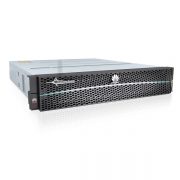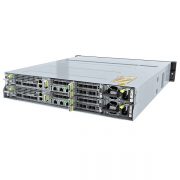Huawei lancerer One UL2100-løsning til at accelerere 4.5G's og 5G's introduktion på 2100 MHz
[Shenzhen, Kina, April 19, 2018] I dag er dagen, hvor Huawei lancerede One UL2100-løsningen, med en række innovative teknologier såsom softwaredefineret antenne (SDA), UL-spektrumdeling, og UL Zero Buffer Zone. Løsningen har til formål at hjælpe med operatørens udvikling til 4,5G og 5G, låse op for det fulde potentiale 2100 MHz-spektrumressourcer og webstedsaktiver, og maksimere investeringsafkastet (KONGE) for customers.
Det 2100 MHz frequency band is widely adopted by operators for mainly deploying UMTS networks across the world. The number of 2100 MHz sites outside of China is higher than that of all other bands. I øjeblikket, 70% of operators enjoy over 15 MHz bandwidth on the 2100 MHz band. Imidlertid, UMTS users are continuously migrating to LTE with the development of 4G, resulting in lower UMTS network loads. A growing number of operators are seizing this opportunity to implement refarming of the 2100 MHz band for LTE.

UL Co-platform Evolution: Multiplying Site Capacity
How to ensure a smooth experience for both UMTS and LTE users during refarming is a real concern among many operators. SDAs support UMTS multi-sector and LTE 4T4R converged evolution. This approach offers high LTE user experience, while UMTS capacity increasing. UL 4T6S features six-sector 4T4R to boost LTE capacity, fulfilling the LTE capacity requirements for the next three to five years. I mellemtiden, the UMTS capacity will jump higher. Dual-band 4T4R radio frequency (RF) modules allow for co-deployment of 1800 MHz and 2100 MHz. This not only provides an optimal LTE experience, but also supports 5G-oriented evolution, and reduces TCO by over 40%.
UL-spektrumdeling: Boosting Spectral Efficiency
The traditional 5 MHz-based UL refarming approach struggles to suit the current needs of both user and service development. Huawei UL Spectrum Sharing solution features innovative interference reduction technologies to allow UMTS and LTE spectrum to overlap. This approach enables demand-based spectrum scheduling and refarming, boosting LTE capacity by more than 15%.
Zero Buffer Zone: Improving Delivery Efficiency
Buffer zones have to be configured in the traditional UL refarming approach to prevent co-channel interference between UMTS and LTE. The refarmed spectrum within the buffer zone cannot be used, resulting in the waste of spectrum resources. Huawei UL Zero Buffer Zone solution boasts intelligent scheduling to eliminate co-channel interference between two RATs, simplifying the deployment process and improving delivery efficiency.
“Existing networks constitute operators’ most essential assets. Unleashing the full potential of existing resources helps operators to improve their investment efficiency,” commented Yu Xiao, the President of Huawei UMTS Network Product Line. “Huawei has been devoted to innovating UL refarming solutions to address operators’ needs in terms of network and service development. The newly released solution is set to bring renewed vitality to the 2100 MHz spectrum. One UL2100 is an ideal candidate for evolving towards 4.5G as it ensures high capacity and experience for both 3G and 4.5G. This future-proof solution is also a fitting choice for 5G-oriented transition. Operators can rest assured that their current investment will not be wasted when 5G arrives.”
Huawei has helped more than 30 operators from France, Thailand, Saudi Arabia and other countries to deploy UL Refarming on 2100 MHz. With MBB services’ gradual LTE-oriented migration, Huawei One UL2100 solution will accelerate the evolution towards 4.5G and 5G on 2100 MHz for more and more operators.




